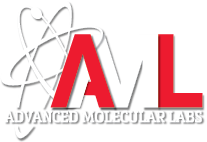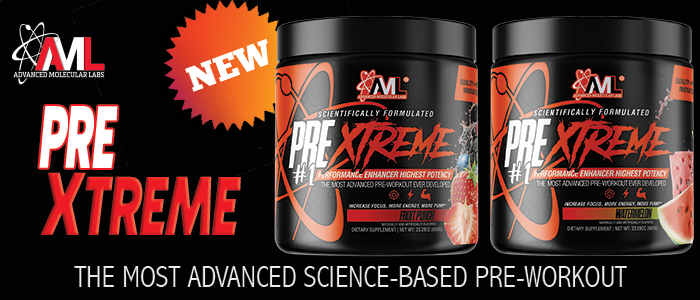


Unlock Adenosine Triphosphate Supplement Benefits
Adenosine triphosphate (ATP) provides energy for all energy-dependent functions within the body. ATP is able to provide this energy because of the substantial amount of energy stored within its phosphate bonds. Although the oral ingestion of adenosine triphosphate supplements results in the rapid breakdown of ATP, which removes its high-energy phosphate bonds and therefore the capacity to supply energy, studies have shown that oral administration of ATP still produces gains in strength and exercise performance. Despite being degraded by the body, the ability of ATP to enhance performance comes from a collection of extracellular ATP functions that have nothing to do with energy production. In fact, these extracellular ATP functions typically require roughly one thousand times less the amount of ATP than the intracellular function of ATP as an energy supply to the cell. As a result, the extracellular functions of ATP are apparently not influenced by the swift degradation of ATP when taken orally.
The best-characterized extracellular functions of ATP that improve muscular performance include enhanced muscular contraction, increased vasodilation and the capacity to decrease pain perception. These effects are triggered when ATP binds to a specific set of adenosine receptors embedded within the cell membrane. This interaction between ATP and the adenosine receptor initiates certain cellular-signaling cascades that produce the aforementioned ergogenic outcomes. Collectively, these recently discovered roles of ATP indicate that ATP supplementation can produce performance-enhancing effects without requiring a high amount of ATP in the body.
Excite Your Muscles With ATP for Greater Size and Strength
Calcium facilitates the interaction between the two muscle proteins actin and myosin, which directly drives muscular contraction. Therefore, more calcium increases actin-myosin interaction— which generates stronger muscular contractions, increasing strength. Interestingly, recent scientific evidence has shown that muscular contraction triggers the release of ATP from the muscle cell. After release from the muscle cell, ATP binds to the adenosine receptor on the outside of the muscle cell, triggering an increase in calcium within the muscle. In addition, it has also been shown that directly adding ATP to isolated muscle tissue also boosts intramuscular calcium levels, suggesting that external sources of ATP, or adenosine triphosphate supplementation, can also enhance muscular contraction. 3
Since ATP increases muscle-cell calcium levels for improved muscular contractile forces, researchers wanted to see if supplementation with ATP could actually enhance muscular performance. One study by Jordan et al. showed that 225 milligrams of ATP per day for two weeks, combined with resistance training, resulted in an increase in total load lifted in the bench press along with a significant increase in the number of repetitions performed during the first set. Another study by Wilson et al. showed that 12 weeks of adenosine triphosphate supplementation at 400 milligrams per day, combined with weight training, increased total-body strength as well as muscle size. This study also showed that test subjects that were purposely overtrained while consuming ATP had a decrease in muscle protein breakdown caused by overtraining, revealing a protective effect of ATP from overtraining. Altogether, these results indicate that oral ATP supplementation increases muscular contraction forces, enabling a higher strength output, while simultaneously improving muscular growth following resistance training.
ATP Increases Glucose Levels, Providing Greater Energy
In addition to increased calcium within muscle cells enhancing muscular contractility, additional studies have shown that ATP-induced calcium increase within muscle tissue also triggers the increase of glucose influx into the cell, supplying the muscle cell with greater levels of energy. It has also been shown that increased calcium levels within the liver from adenosine triphosphate supplement consumption increases the conversion of glycogen into glucose so it can be used as an energy source by muscle tissue as well as the rest of the body. Since glycogen is abundantly stored in the liver, the conversion of glycogen into glucose triggered by ATP provides a large source of energy for the muscle cell, thus improving exercise performance.
ATP Enhances Vasodilation for Greater Muscular Endurance
The signaling molecule nitric oxide (NO) increases blood flow to the muscles by triggering the relaxation of the smooth muscle within the arterial wall, causing the arteries to dilate or open up. Greater vasodilation within the arterial wall generates increased blood flow, bringing more essential nutrients and oxygen to laboring muscles while simultaneously removing metabolic waste, which collectively enhances muscular performance.
It has been demonstrated that ATP ingestion stimulates the formation of NO, resulting in vasodilation and increased blood flow— representing another performance-enhancing effect of ATP. Due to the ability of ATP to boost vasodilation, the benefits of ATP supplements should have a significant impact on muscular endurance due to the increased energy availability to the muscle and metabolic waste product removal. In fact, the influence of ATP on muscular endurance was shown in a study by Rathmacher et al., where the consumption of 400 milligrams of ATP per day for two weeks significantly increased muscular endurance, especially for the final two sets during a peak-torque endurance test using a dynamometer.
ATP Increases Your Pain Threshold, Supporting Higher Intensity Training
ATP has the extraordinary capacity to minimize pain, as several studies have shown that patients with acute surgical pain or chronic neuropathic pain have their pain alleviated when treated with ATP. In addition, another study that gave mice an intravenous dose of ATP showed that the mice had an increased pain threshold while standing on a hot plate. As a result, the rather unique ability of ATP to mitigate pain and increase pain tolerance, especially while working out, will likely produce an enhanced training effect. In closing, because of the exceptional performance-enhancing qualities of ATP, Advanced Molecular Labs and its CEO Steve Blechman (who was the first to introduce ATP as ATP Fuel, during his 27 years at Twinlab) have added the ideal amount of ATP to its newly released, revolutionary product, AML Preworkout. In addition to the many other ergogenic compounds in AML Preworkout, the addition of adenosine triphosphate supplements will more greatly fill your muscles with energy while increasing their contractile force for superior strength during your workout— all while stimulating greater blood flow to your muscles and increasing pain tolerance, so you can push your body to the limit for even longer periods of time.
For most of Michael Rudolph’s career he has been engrossed in the exercise world as either an athlete (he played college football at Hofstra University), personal trainer or as a Research Scientist (he earned a B.Sc. in Exercise Science at Hofstra University and a Ph.D. in Biochemistry and Molecular Biology from Stony Brook University). After earning his Ph.D., Michael investigated the molecular biology of exercise as a fellow at Harvard Medical School and Columbia University for over eight years. That research contributed seminally to understanding the function of the incredibly important cellular energy sensor AMPK— leading to numerous publications in peer-reviewed journals including the journal Nature. Michael is currently a scientist working at the New York Structural Biology Center doing contract work for the Department of Defense on a project involving national security.
References:
1. Casas M, Buvinic S and Jaimovich E. ATP signaling in skeletal muscle: from fiber plasticity to regulation of metabolism. Exerc Sport Sci Rev 2014;42, 110-116.
2. Osorio-Fuentealba C, Contreras-Ferrat AE, et al. Electrical stimuli release ATP to increase GLUT4 translocation and glucose uptake via PI3Kgamma-Akt-AS160 in skeletal muscle cells. Diabetes 2009;62, 1519-1526.
3. Jorquera G, Altamirano F, et al. Cav1.1 controls frequency-dependent events regulating adult skeletal muscle plasticity. J Cell Sci 2013;126, 1189-1198.
4. Jordan AN, Jurca R, et al. Effects of oral ATP supplementation on anaerobic power and muscular strength. Med Sci Sports Exerc 2004;36, 983-990.
5. Wilson JM, Joy JM, et al. Effects of oral adenosine-5’-triphosphate supplementation on athletic performance, skeletal muscle hypertrophy and recovery in resistance-trained men. Nutr Metab (Lond) 2013;10, 57.
6. Charest R., Blackmore PF and Exton JH. Characterization of responses of isolated rat hepatocytes to ATP and ADP. J Biol Chem 1985;260, 15789-15794.
7. Boynton AL, Cooney RV, et al. Extracellular ATP mobilizes intracellular Ca2+ in T51B rat liver epithelial cells: a study involving single cell measurements. Exp Cell Res 1989;181, 245-255.
8. Parker JC. Metabolism of external adenine nucleotides by human red blood cells. Am J Physiol 1970;218, 1568-1574.
9. Schrader J, Berne RM and Rubio R. Uptake and metabolism of adenosine by human erythrocyte ghosts. Am J Physiol 1972;223, 159-166.
10. Rathmacher JA, Fuller JC Jr., et al. Adenosine-5’-triphosphate (ATP) supplementation improves low peak muscle torque and torque fatigue during repeated high intensity exercise sets. J Int Soc Sports Nutr 2012;9, 48.
11. Agteresch HJ, Dagnelie PC, et al. Adenosine triphosphate: established and potential clinical applications. Drugs 1999;58, 211-232.
12. Khakh BS and North RA. P2X receptors as cell-surface ATP sensors in health and disease. Nature 2006;442, 527-532.
13. Gomaa AA. Characteristics of analgesia induced by adenosine triphosphate. Pharmacol Toxicol 1987;61, 199-202.





